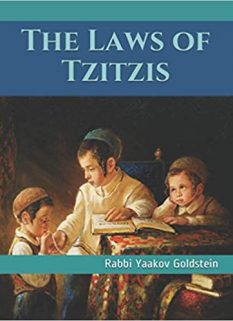Leaves fell off:[1] If majority of the Arava leaves fell off the Arava, it is Pasul.[2] One must be very careful regarding this matter, especially when inserting it into the binding of the Lulav, that this not cause the leaves to come off. [Thus it is advisable to check the […]
Tithes-Maaser
Tithes-Using an Esrog from Eretz Yisrael:[1] An esrog which is forbidden to be eaten is not kosher. Therefore one must be certain that an esrog from Israel has had all its tithes removed and is not orlah (fruits grown within first three years of the tree). Esrogim from outside […]
Length
Length:[1] The length of the Aravos must be at least three Tefachim. How much is three Tefachim? Some Poskim rule that every Tefach is 4 Agudlin and hence three Tefachim is 12 Agudlin [24cm.] Others rules that each Tefach is 3.33 Agudlin and hence three Tefach is 10 Agudlin […]
Calabria
Calabria: There is a tradition handed from the Alter Rebbe to use specifically the Yanovar esrog for the Daled Minim for reasons known to him. It is called Yanover in reference to the region of growth in Italy.[1] A possible reason for this tradition may be since Italy is referred […]
Identity
The identity of the Aravos:[1] The Torah states that one is to take a Arvei Nachal. This refers to the willow branch. Its Signs:[2] The following are the signs of a Kosher Arava. A red stem:[3] This means that the Arava comes from a tree that grows red stems. […]
Murkav-Grafted
Murkav/Grafted:[1] A grafted Esrog, or a later generation of a grafted Esrog, is Pasul. There are four general signs in a kosher esrog which are different in an esrog grafted with lemon. A grafted esrog is smooth like a lemon while a kosher one is bumpy. A grafted esrog has […]
The Oketz-Stem
Oketz/Stem:[1] What is the Oketz: The Oketz is the stem from which the Esrog grows from on the tree. If the Oketz was removed from the Esrog in a way that none of it remained on the Esrog, hence creating a grooved area, the Esrog is invalid.[2] [Furthermore even if […]
The Pitam
Pitam:[1] What is a Pitam: Many Esrogim grow a wood stem protruding on their top called the pitam or the dad. In many the Pitam begins to grow from within the inside of the esrog. In others it grows from its very top on its outside. On the dad/pitam […]
Ripe/Size/Color
Ripe/Size/color: Size: An esrog’s minimum size is a kebeytza, which is approximately 56 grams. (ibid/29) Green:[1] An Esrog which has not yet ripened to the point that part of it has begun to turn yellow is Pasul unless one is sure that the Esrog will reach this stage. The custom […]
Shape
Shape:[1] An esrog which does not have the general esrog shape, (i.e. round esrog), is Pasul. [1] 648/28 Bookmark

